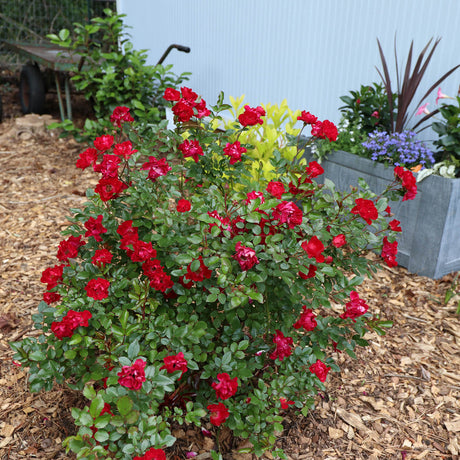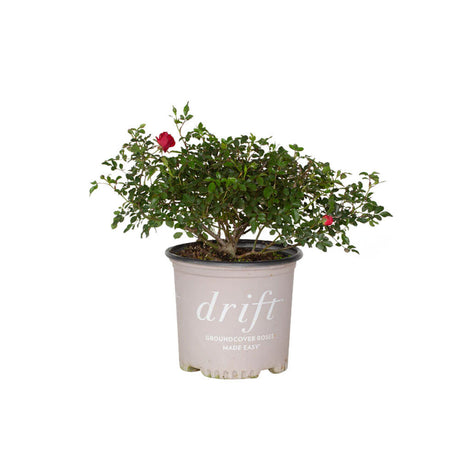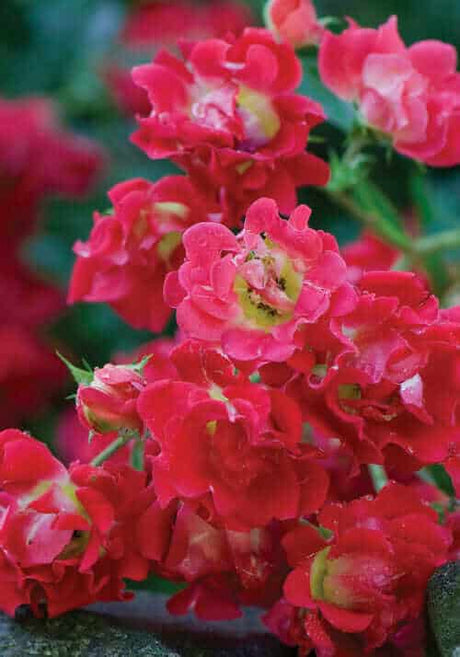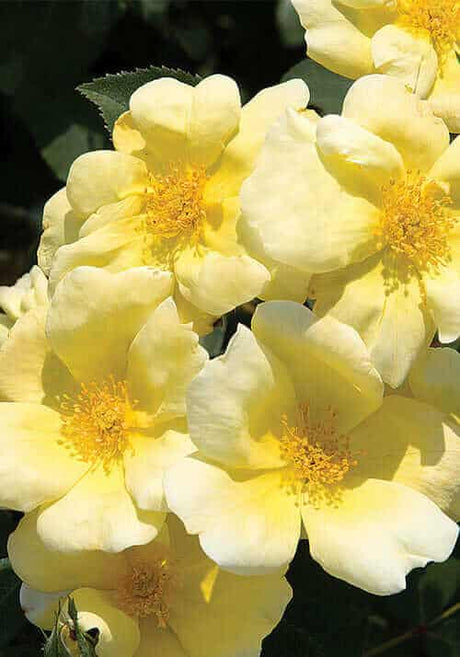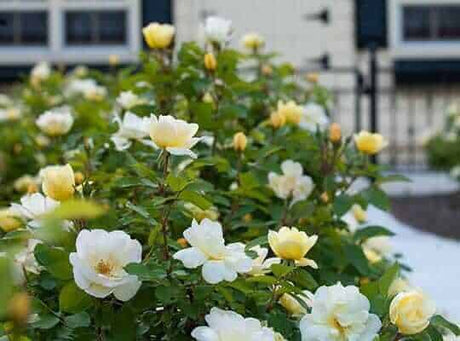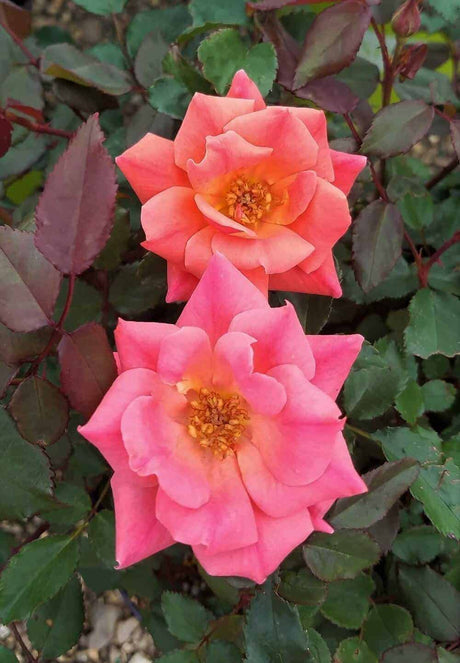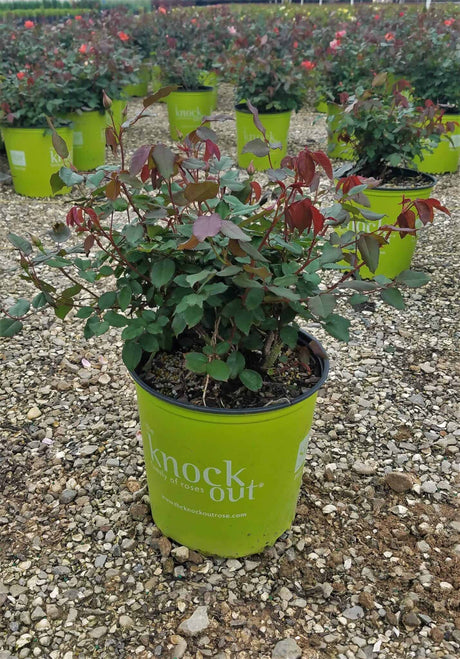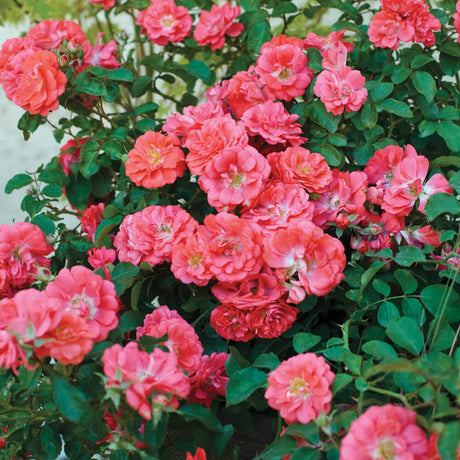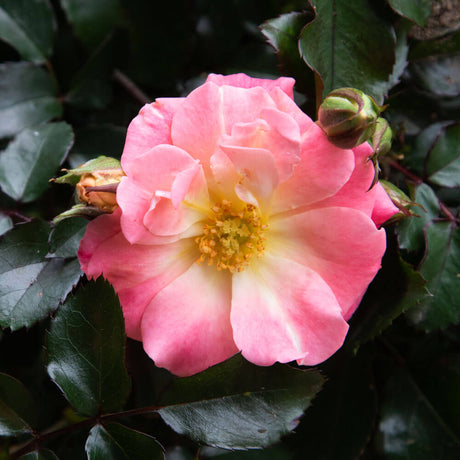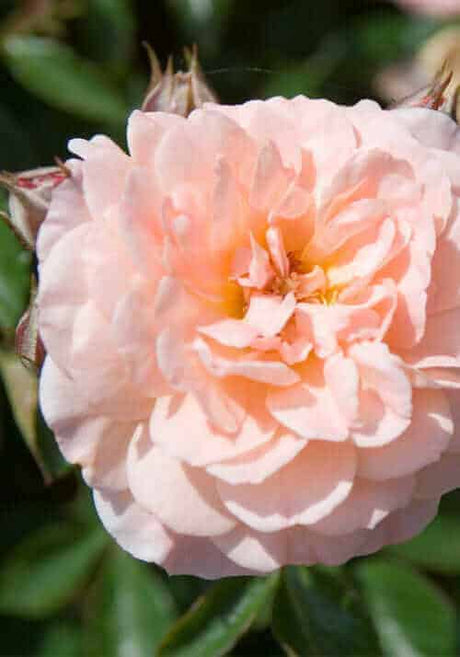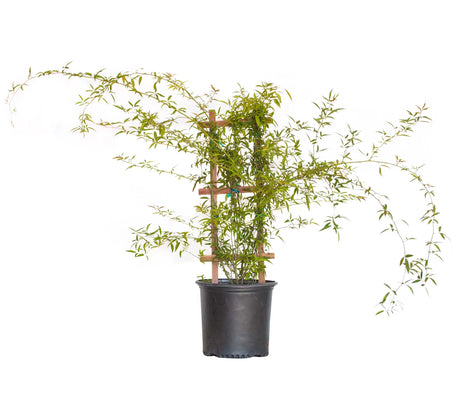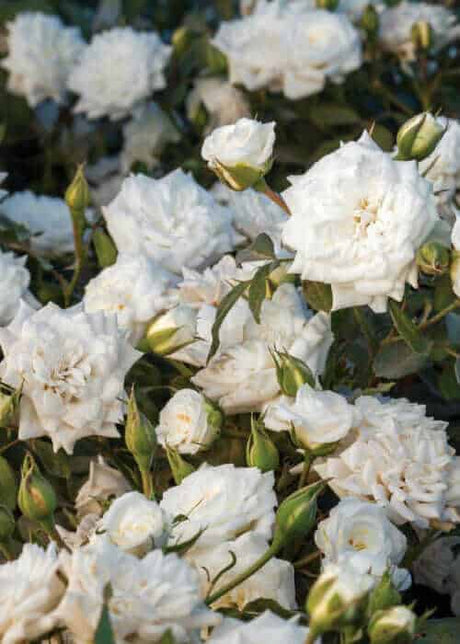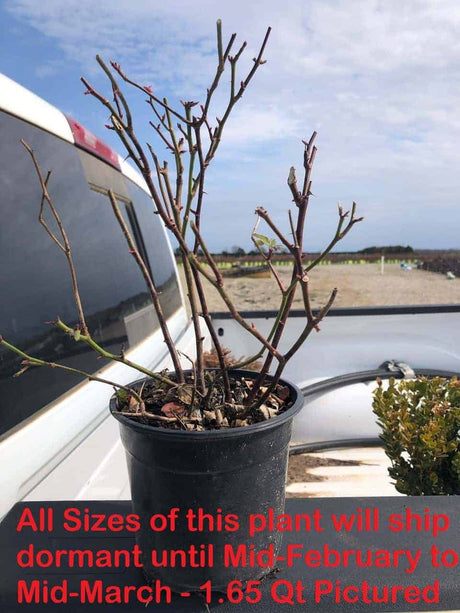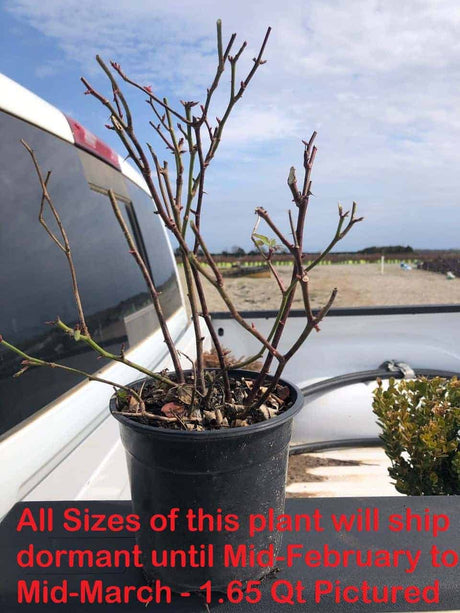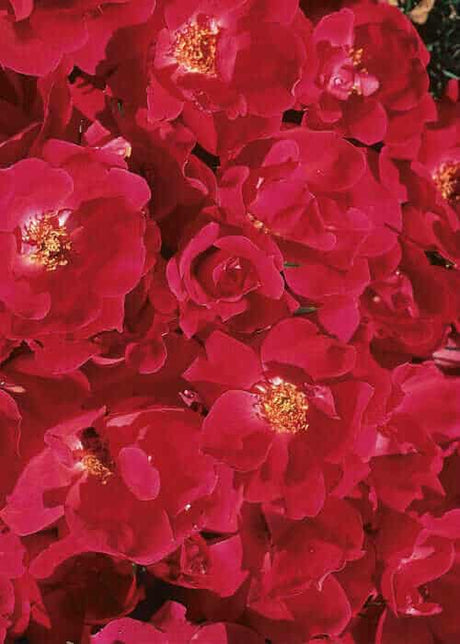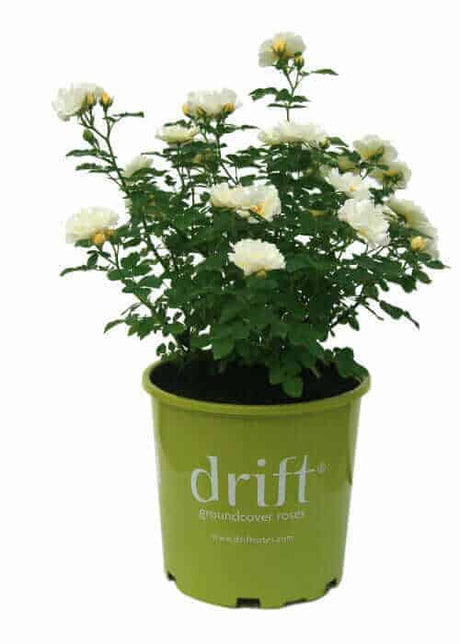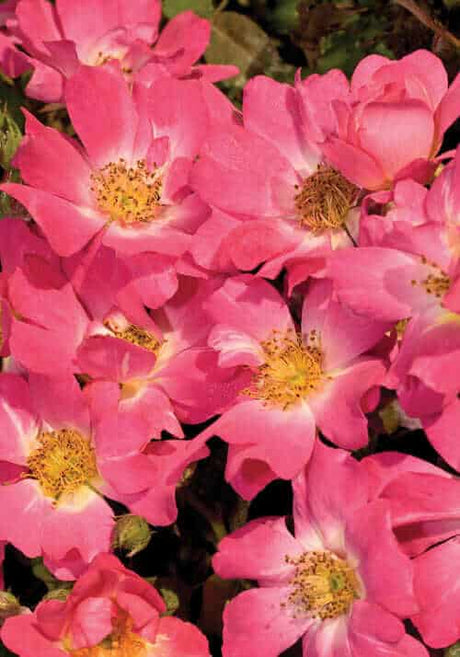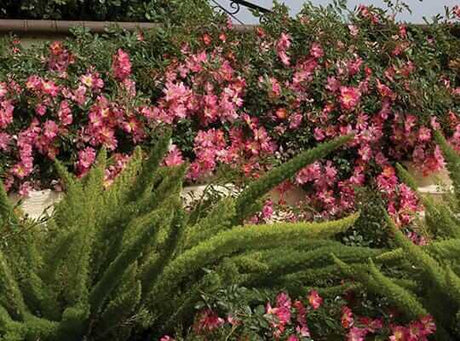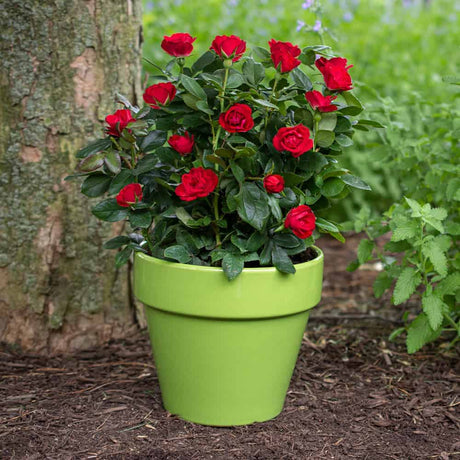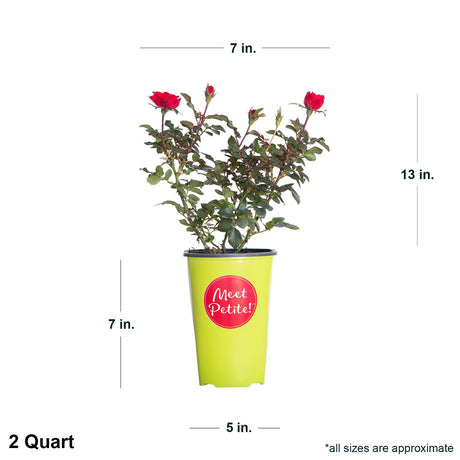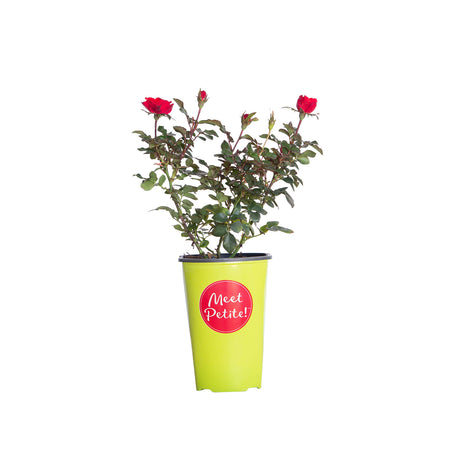FiltersFilter & Sort
Southern Living Plant Collection
It’s A Breeze Groundcover Rose
From $18.98Unit price /UnavailableIn stock (403)- Sold out
- Sold out
- Sold out
- Sold out
- Sold out
- Sold out
- Sold out
- Sold out
Even non-gardeners know about Rose bushes. They're one of the most diverse and popular plant species. They come in nearly any size, almost every color, and approximately every bloom shape imaginable. Gardeners cherish them and often care for them like spoiled grandchildren. We're proud to offer a considerable selection of some of our favorites, from reliable Knock Out Roses to low-growing Drift Roses.
Why Should I Plant Rose Bushes in My Garden?
Most gardeners have plenty of reasons to grow Roses. If you're on the fence, here are some of our favorite reasons.
Many varieties are powerhouse rebloomers
Reblooming rose bushes are some of the most reliable rebloomers that money can buy. They just bloom and bloom and bloom and bloom during the warmer months. This is a great way to have consistent color and bloom coverage throughout the growing season.
There's a Rose Bush for any landscape
As we said earlier, they come in almost every size and shape imaginable. Rounded, shrubby, upright, low-growing, weeping; you name it a landscape need, and a rose will probably fit like a charm there. They also take trimming in stride, so feel free to shape them up however you like.
They're All-day Full Sun Champions
Most plants like the sun, but all-day direct sunlight exposure can be a lot, even for some plants that we tend to think of as sun-loving. Most roses, however, will take as much sun as you'll give them. Knock Outs, Drifts, and other rebloomers, for instance, don't sweat when faced with an all-you-can-eat buffet of solar rays. It allows them to produce even more flowers. Just ensure they have enough water to stay happy and healthy during the summer heat.
Where Should I Plant?
Most roses prefer their planting locations to have slightly acidic soil, regular watering, and over 6 hours of sun. However, some hardier varieties, like Knock Outs, will grow well in a broader range of soils. Avoid planting where standing water is expected, which may lead to root rot. If you have clay-heavy soil, you may likely run into soil pH and drainage issues. Clay is naturally alkaline, very dense, and retains a lot of water. Remedy this by mixing Pine Bark mulch with your native clay soil during planting with a one-to-one ratio. This will improve the drainage and soil aeration. Then, treat your soil with a soil acidifier to lower the pH. These steady bloomers contrast nicely with upright evergreens like Cypress Trees or Juniper Trees.
When Should I Plant?
Spring and Fall are both suitable times to plant Roses. However, which season is ideal will tend to depend on where you're located.
USDA Zone 8 and up:
In these warmer zones, Fall tends to be the ideal time to plant. This is because the ground is nice and warm from the summer, but the air has cooled down slightly. Therefore, the roots can spread out quickly. By the time that summer rolls around the next year, the plant is decently established and more prepared to handle the intense summer heat. Still, monitor your plant over its first summer to ensure that it isn't drying out rapidly.
USDA Zone 7 and below:
Cooler zones should consider planting during spring after the threat of frost has passed in your area. This will give your plant time to get situated in your yard before bitter winter cold sets in later in the year. We still recommend providing overnight coverage during hard freezes in these areas for your plant's first winter in the landscape. Over time, they will require less (if any) supplemental cold coverage.
How to Plant:
- First, determine where your new plant(s) will go based on the recommended growing specifications for your specific variety.
- Next, dig a hole that is roughly three times as wide as the root ball of your plant.
- The hole should only be deep enough that the plant will sit even with the native ground around it.
- Mix your native soil with some good quality garden soil or composted manure (we recommend composted manure because it doesn't raise soil pH as much as regular compost).
- Put the plant in the center of the hole and backfill the soil mixture you've prepared.
- Lightly tamp the soil down around the base of the plant.
- Now is also a good time to lay several inches of mulch over the fresh soil of your new planting
- Apply fertilizer at this point as well, if you like. We recommend a root rocket fertilizer for summer and late fall plantings, and slow-release rose fertilizer for spring and early fall. We do not recommend liquid fertilizer for new plantings.
- Soak with a hose to settle the soil and hydrate the plant.
How to Prune Your Rose Bush
Extensive pruning is best left for early spring. If done properly, this will lay the groundwork for your plant to grow beautifully throughout the rest of the season.
- Wait until your expected last frost of the year has passed. Trimming encourages new growth. New growth is easily damaged by frost. So if you trim too early and your plant begins to flush out and you get hit with some sub-freezing temperatures, your new growth will likely be damaged. If you do end up trimming too early and freezing temperatures come around again, provide overnight coverage for your trimmed and flushing plants to insulate them from the cold.
- Remove last year's leaves. Snip off all of the leaves from the past year. Your plant won't need them and they can contain pests, fungus, or diseases.
-
Remove unsightly and dead branches. Thin branches, dead branches, and branches that are growing in a "strange" way or crossing should be snipped off at their base.
- You can tell if a branch is dead if it looks washed out in color or dry and has no living leaves on it. To make sure, scratch the bark off at the base of the stem. If it's not green underneath, it's dead.
-
Shape it for optimal growth. Depending on your rose, you'll want to go with one of a couple of different strategies.
- If it's a groundcover rose, trim it back to where you'll have strong, healthy branches facing in every direction. Try to avoid having branches too close together, competing to grow in the same direction. Prune them back by 2/3's if you must to clean up the shape. This will allow your groundcover variety to bush out evenly. They will grow back quickly during the growing season.
- If it is an upright rose, leave only branches that are growing upright and cleanly. If you have two branches next to each other, both growing nicely, but just within a couple of inches of each other, choose the best one and snip the other. The end result should look like healthy, defined branches sticking up in a "V" or almost "U" shape.
- Rake up the discarded stems and leaves from beneath your plant. This additional measure also helps to remove pests, fungus, and disease-causing pathogens that could re-infect your plant in spring.
- Fertilize with a slow-release rose fertilizer. This will ensure that your plants take off once spring gets into full swing.


